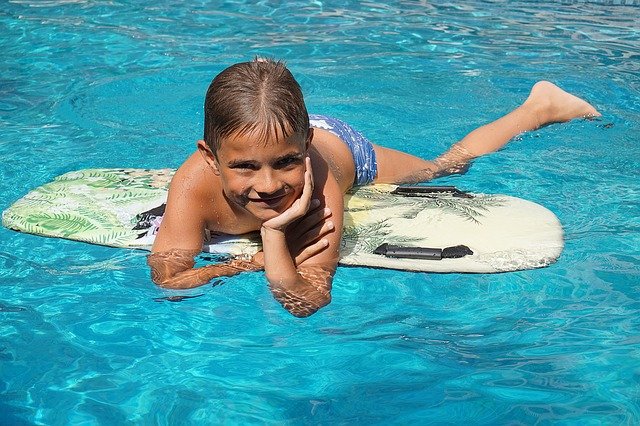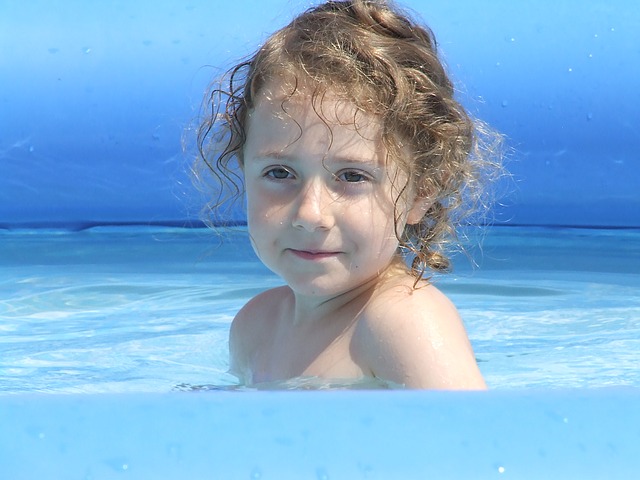Pets
If you want to give your pet a bath in the summer sun, get a special tank with enough fun, with enough space for grooming and frolicking Cats do not like water (with some exceptions), but the dog will then welcome when you prepare something like this for them in the garden. All you need is a small plastic tank embedded in the ground, from which you can easily drain water and replace it with a new tank at any time, and 150 liters of water is enough for them.

But it should be noted that the animal does not belong to the “human” pool. From their usually dirty anus, the remains of feces are released into the water, many parasites are released from the coat, and in such water you want to bathe?

Water treatment
Take a shower before bathing, paying attention to hygiene, do not let the dog into the pool, and do not forget that even a carefully washed body is not sterile. During your stay in the tank, sebum is released from the skin, releasing dead cells in the form of scales and dandruff, pubic hair and hair, and bacteria that adhere to the skin as a protective barrier. Bacteria on human skin, whether in the armpits, back, or feet, it is desirable to maintain optimal pH, but in the pool it can multiply. Therefore, all standing water, including pool water, should be regularly cleaned and filtered.

Swimming pool
The crystal clear liquid in the tank is the dream of all those who love open-air baths. If you follow the basic rules, you can indulge in such a thing – strong enough filtration with a pump and the application of appropriate chemicals.
Chlorination or salinization– These are 2 basic processes of cleaning the filling of the swimming pool based on the released chlorine. For this, either chlorine tablets or sea salt are used, which are broken down into sodium and chlorine ions by the electrolysis process.
Flocculant– Each filtration works on the principle of passing the liquid through a filter cartridge filled with fine sand. The dirt is safely trapped in it. But what to do in a situation where a small mixture of microbes and dust, algae and pollen is so small that it can not be stored in filtration? For this purpose, so-called flocculants are used, which bind fine particles to larger units (flakes), and they get stuck between the grains of sand.
Algae preparation– Algae pose a rather serious threat to all outdoor reservoirs and form spontaneously whenever there is enough heat and sun rays. You can not get rid of them, not only in the swimming pool, but also in the aquarium. For their formation, preparations labeled, for example, as azuro are used.